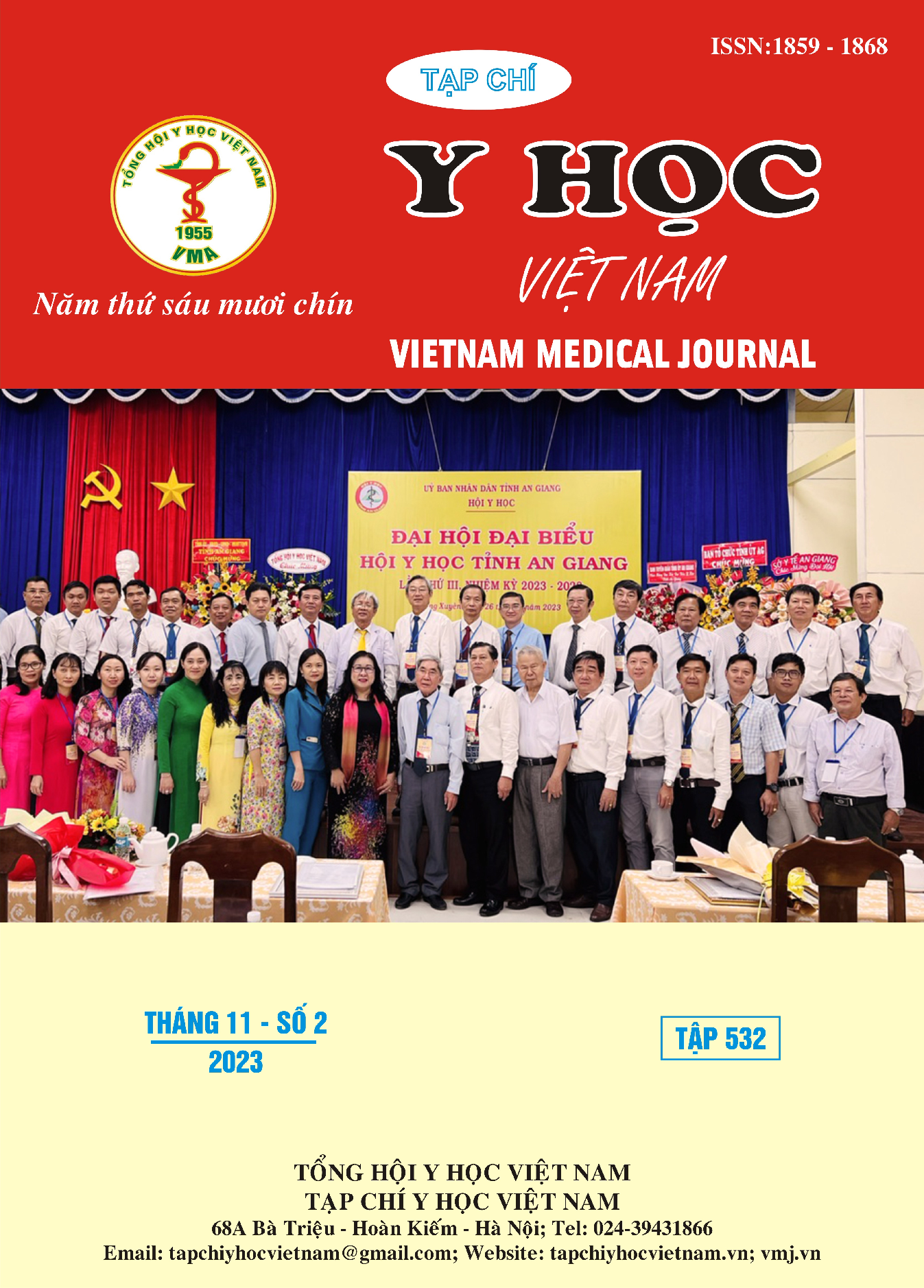QUALITY OF LIFE OF PATIENTS WITH CHRONIC SPONTANEOUS URTICARIA AND THE SINGLE NUCLEOTIDE POLYMORPHISM RS11673309 OF C5AR1 GENE
Main Article Content
Abstract
Objective: To assess the Dermatology Life Quality Index (DLQI) of patients with chronic spontaneous urticaria in Vietnam and its relation with the single nucleotide polymorphism variants rs11673309 of C5AR1 gene. Methods: Cross-sectional study described 102 CSU patients who came for diagnosis and treatment at Ho Chi Minh City Hospital of Dermato Venereology from March 2023 to July 2023. These patients had their medical records collected and underwent clinical examinations before blood samples (2ml) were taken and identified the single nucleotide polymorphism variants rs11673309 of C5AR1 gene at the Biomedical Research Center in Pham Ngoc Thach University of Medicine. Results: Among 102 CSU patients, there were 29 men and 73 women, whose average age was 37.6 ± 12,5. The study records 3 genotypes, including TT, TG and GG. Genotype TT accounts for 32.4%, TG accounts for
49.0%, and GG takes up 18.6%. There is no statistical significance among the three genotypes in the single nucleotide polymorphism variants rs11673309 of C5AR1 gene with UAS (p = 0.144). The median of the Dermatology Life Quality Index (DLQI) is 13.0 [9.0;19.0] and there is statistical significance regarding DLQI with genotypes in đa hình đơn nucleotide rs11673309 (p = 0,003). Conclusion: Patients with đa hình đơn nucleotide C5AR1 -1330TG had the poorest life quality. This research can be a premise to facilitate further development and the relation between the single nucleotide polymorphism variants rs11673309 of C5AR1 gene and chronic spontaneous urticaria in Vietnam.
Article Details
Keywords
: Chronic Spontaneous Urticaria, C5AR1, -1330TG, UAS, DLQI.
References
2. Bracken S. J., S. Abraham, and A. S. MacLeod, Autoimmune Theories of Chronic Spontaneous Urticaria, Front Immunol. 2019, 10: p.627.
3. Das Aurosikha, Lalita Mohan Behera, and Soumendra Rana, (2021) "Interaction of Human C5a with the Major Peptide Fragments of C5aR1: Direct Evidence in Support of “Two-Site” Binding Paradigm". ACS Omega. 6(35): p. 22876-22887.
4. Heimbach L, Li ZW, Berkowitz P, Zhao ML, Li N, Rubenstein DS, et al. The C5a receptor on mast cells is critical for the autoimmune skin- blistering disease bullous pemphigoid. J Biol Chem 2011;286:15003–09.
5. Kaplan AP. Chronic urticaria: pathogenesis and treatment. J Allergy Clin Immunol 2004;114:465–
74. quiz 475.
6. Metz Martin, et al., The Diagnostic Workup in Chronic Spontaneous Urticaria - What to Test and Why, The Journal of Allergy and Clinical Immunology: In Practice, 2021, 9(6): p. 2274-2283.
7. Siyu Yan and et al, Influence of component 5a receptor 1 (C5AR1) 1330T/G polymorphism on nonsedating H1-antihistamines therapy in Chinese patients with chronic spontaneous urticaria, Journal of Dermatological Science, 2014, p240-245, http://dx.doi.org/10.1016/j.jdermsci.2014.09.012


